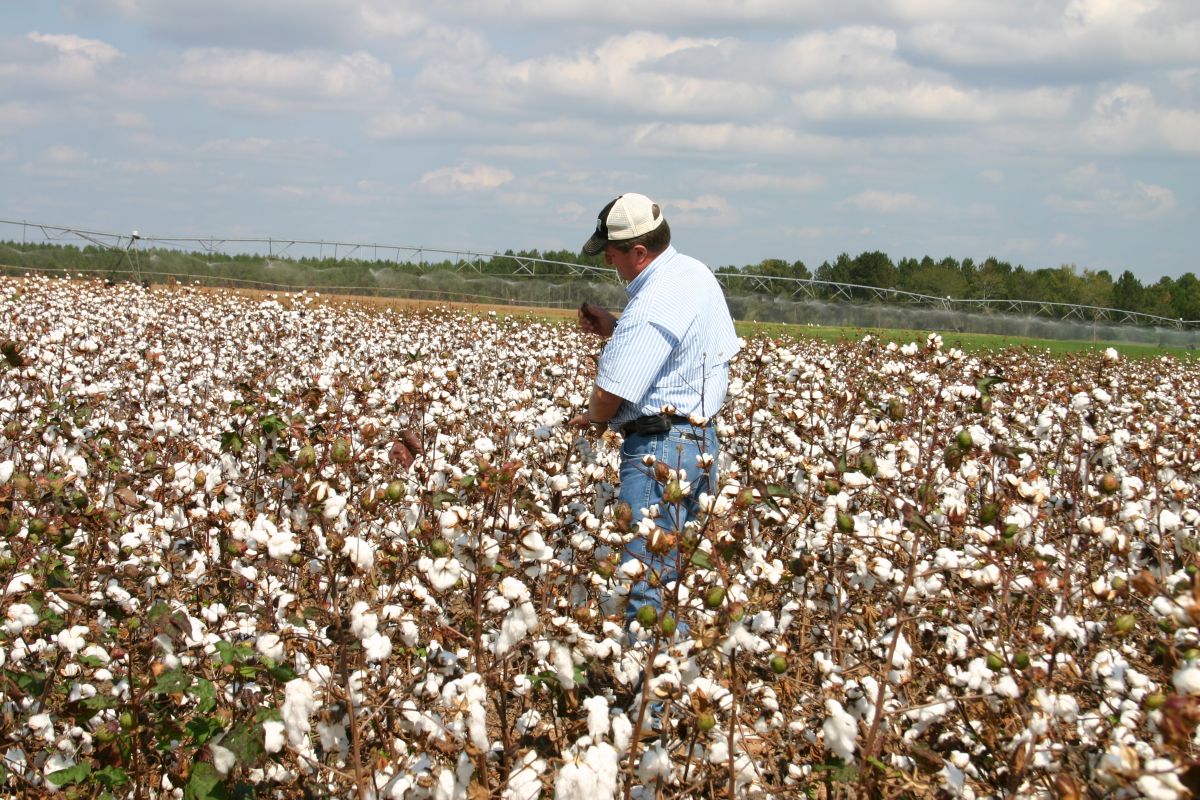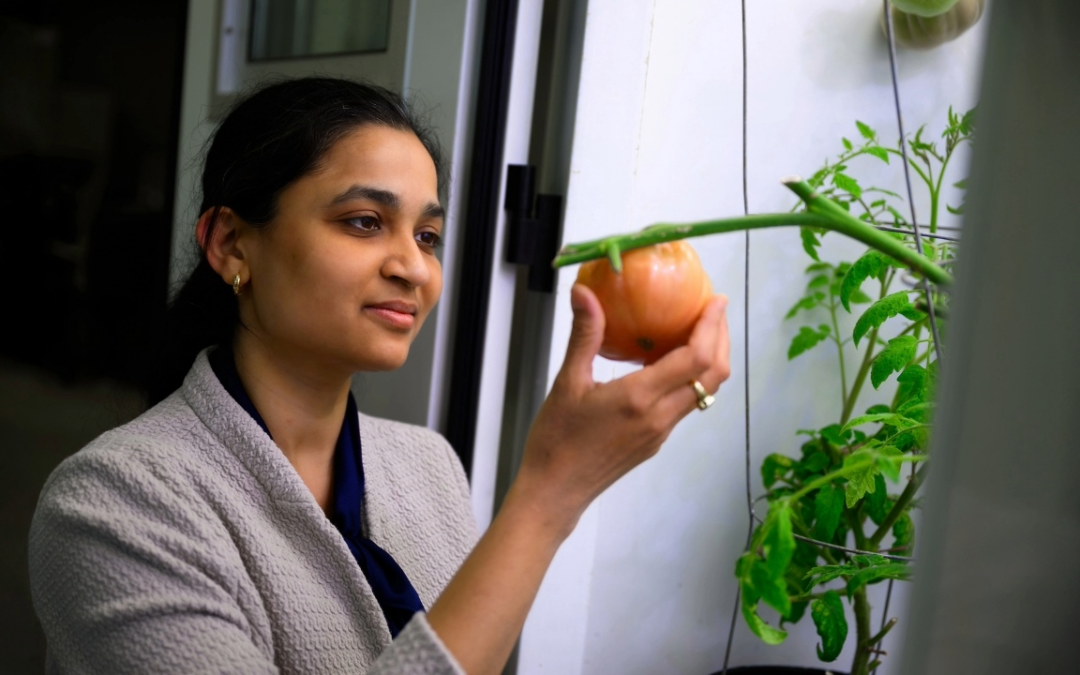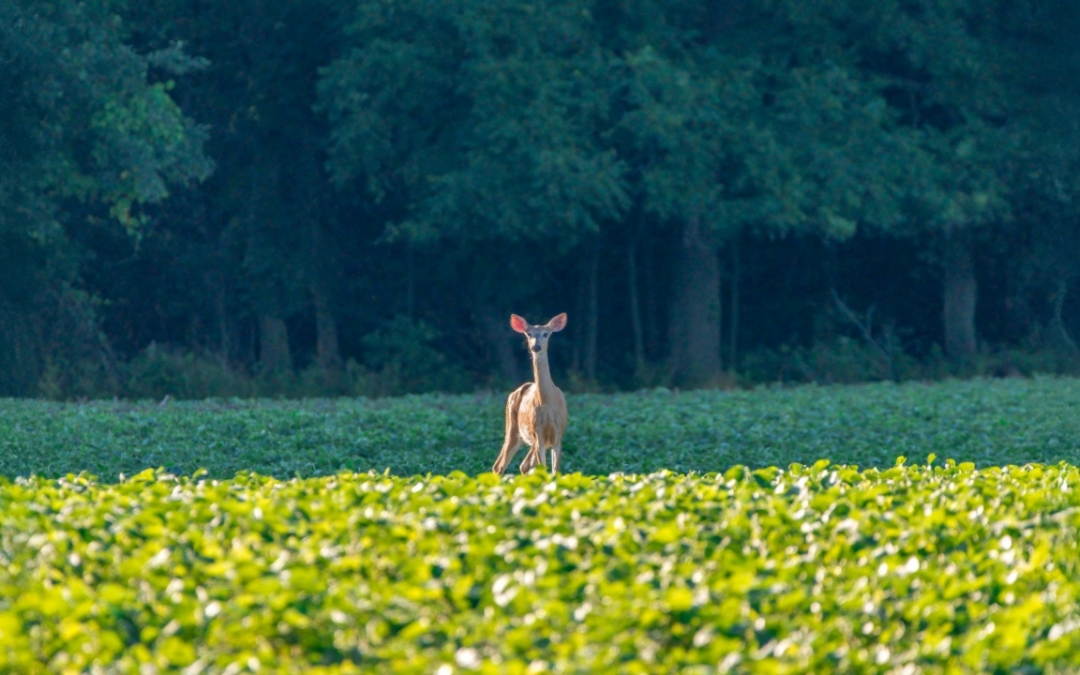Cotton is undoubtedly one of the most recognizable plants in the world, with its heart-shaped leaves and branches that explode into powder-white fruit. But it’s also one of the more understudied field crops.
“Previously, it was unclear where and which specific pathogens were causing cotton seedling disease across the region,” said Morgan Bragg, postdoctoral fellow in the College of Agriculture’s Department of Plant Pathology.
Bragg’s research study—Unraveling Cotton Seedling Diseases and Microbial Interactions in the Cotton Belt—will provide a map of where cotton pathogens are present across the Southeast region, something that hasn’t existed before now.
Seedling diseases can cause a myriad of problems in cotton, including delayed crop development, patches missing plants in the field, and yield loss, all which can increase input costs and decrease profits for growers.
“Especially here in the Southeast U.S., the warm and wet summertime weather during the growing season creates favorable conditions for disease development,” Bragg said.
The Southeast region accounts for approximately 63% of cotton produced in the United States. Seedling diseases are consistently among the top three causes for yield reduction, with losses ranging from $30 million to $200 million annually, depending on the year.
“The major long-term goals of the project are two-fold,” Bragg said. “First, is to understand where pathogens are and identify if there are any environmental or soil factors that are associated with pathogen presence across the Southeast region.”
“Second, we will characterize the predicted function of the microorganisms that are in the rhizosphere (the soil clinging to the roots) to understand if there are certain functions associated with disease presence across the Southeast region.”
Bragg’s study will accomplish these goals by collecting 30-day-old seedlings and the surrounding soil from 11 states across the region.
“We have done this for 2023 and 2024 already and are prepping for the 2025 sample now,” she said. “We used sequence-based methods to identify what bacteria, fungi and oomycetes —a fungus-like type of plant pathogen —are present in the soil, the rhizosphere, and roots and to predict what function microorganisms are preforming in the rhizosphere.”
“A targeted sequencing approach is where we sequence a specific region of DNA that allows us to identify what microbes are there versus a non-targeted approach that just sequences everything that is present in the sample,” Bragg said. “Using the non-targeted approach, we can identify which microbes are there plus we can predict their function. Both are useful depending on what type of questions you are trying to answer.”
A targeted approach is a cost-effective and approachable way to characterize what microbes are in the samples of interest, she explained.
“Specifically for fungi, a targeted approach typically gives you better results for identifying what species are present,” Bragg said. “Many databases that the non-targeted approach uses to identify the species present are largely based on bacteria, as fungi are less studied overall.”
Weather data, like the amount of rain or the air temperature, is gathered for each sampling site using GPS coordinates.
“From previous studies, we know environmental conditions the three days after planting are the most important for determining seedlings if seedlings come out of the ground, so we typically gather three-day averages for our weather variables,” she said.
“For the soil variables for each site, we utilize the soil testing lab here at Auburn to quantify provide total macro and micronutrients, pH, percent organic matter and the soil profile. Then for each site, we pair up the sequencing, weather and soil data and run correlations to uncover any patterns within these data.”
While cotton overall remains understudied, Bragg hopes the knowledge from her study will help growers make more informed site-specific management choices to increase their effectiveness.
“Up to now, no one has combined pathogen data, weather information, soil variables and disease outcomes for cotton,” Bragg said. “By doing this, we can understand if there are certain variables that are associated with disease outcomes or pathogen presence.
“This will provide us with environmental risks that could increase chances of disease or could lead to future research where we can manipulate the variable of interest to improve pathogen management effectiveness for growers.”
The amount for Bragg’s grant is $214,591 and is sponsored by USDA-NIFA-AFRI Postdoctoral Fellowships Program.





